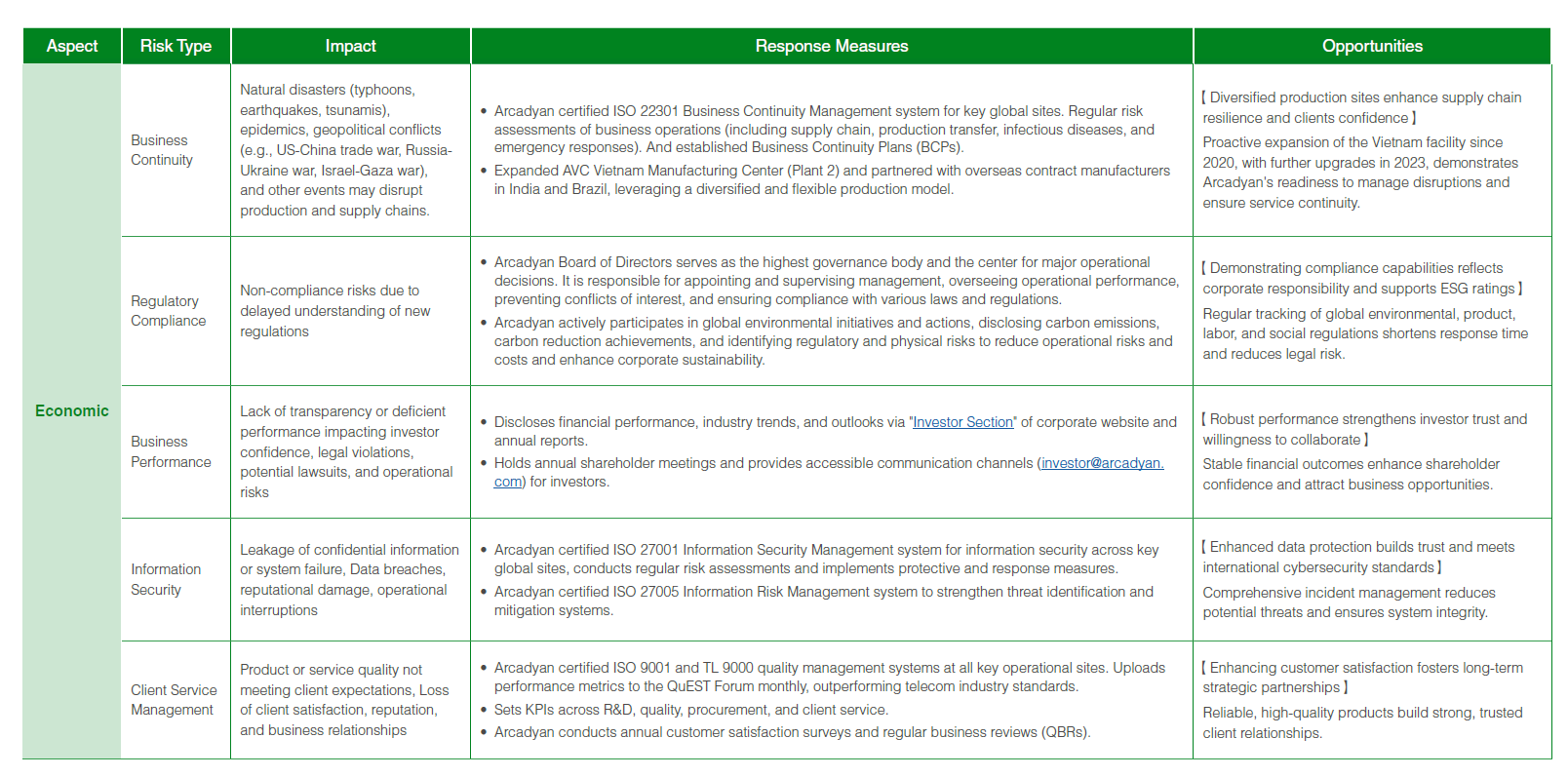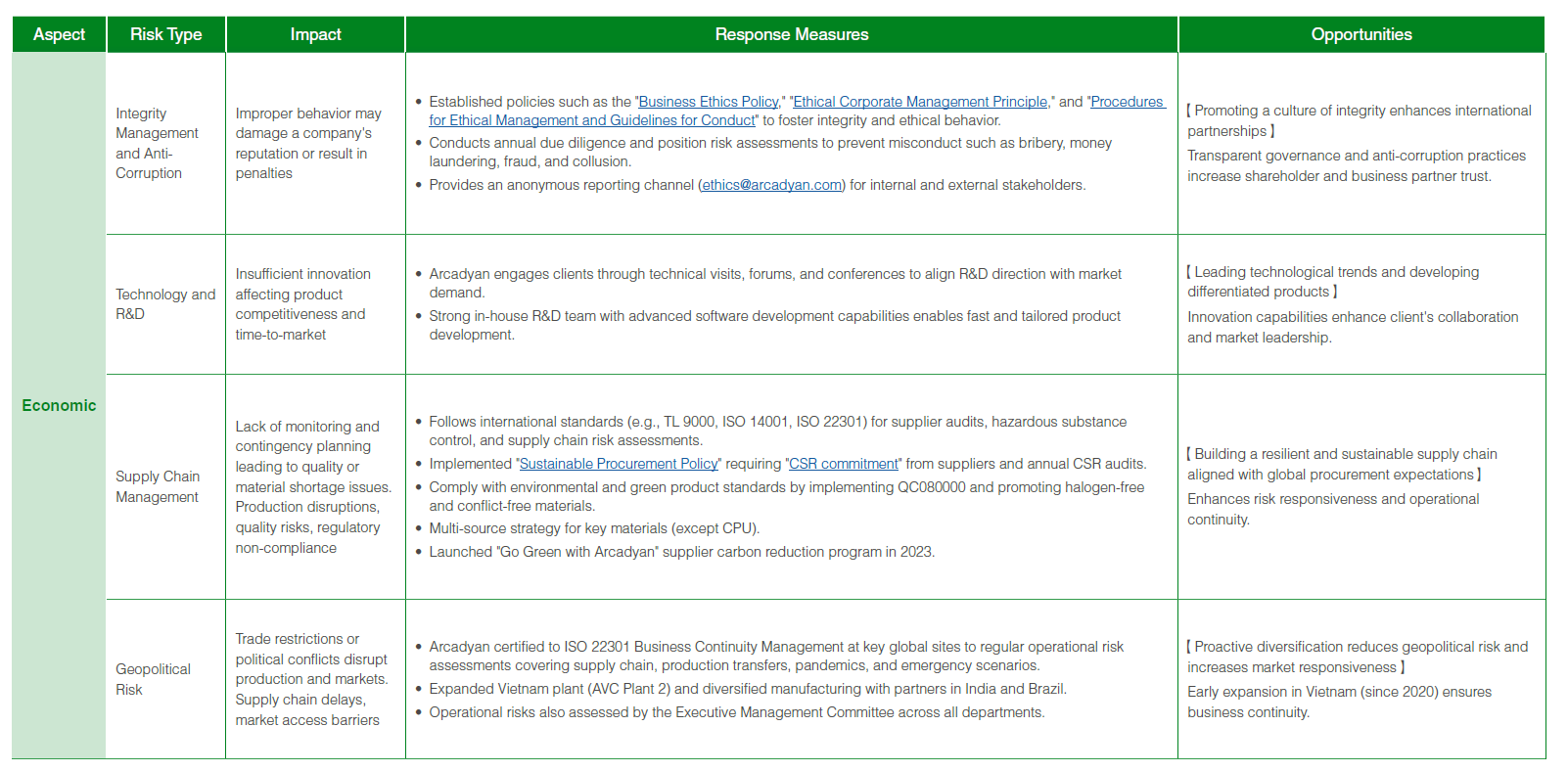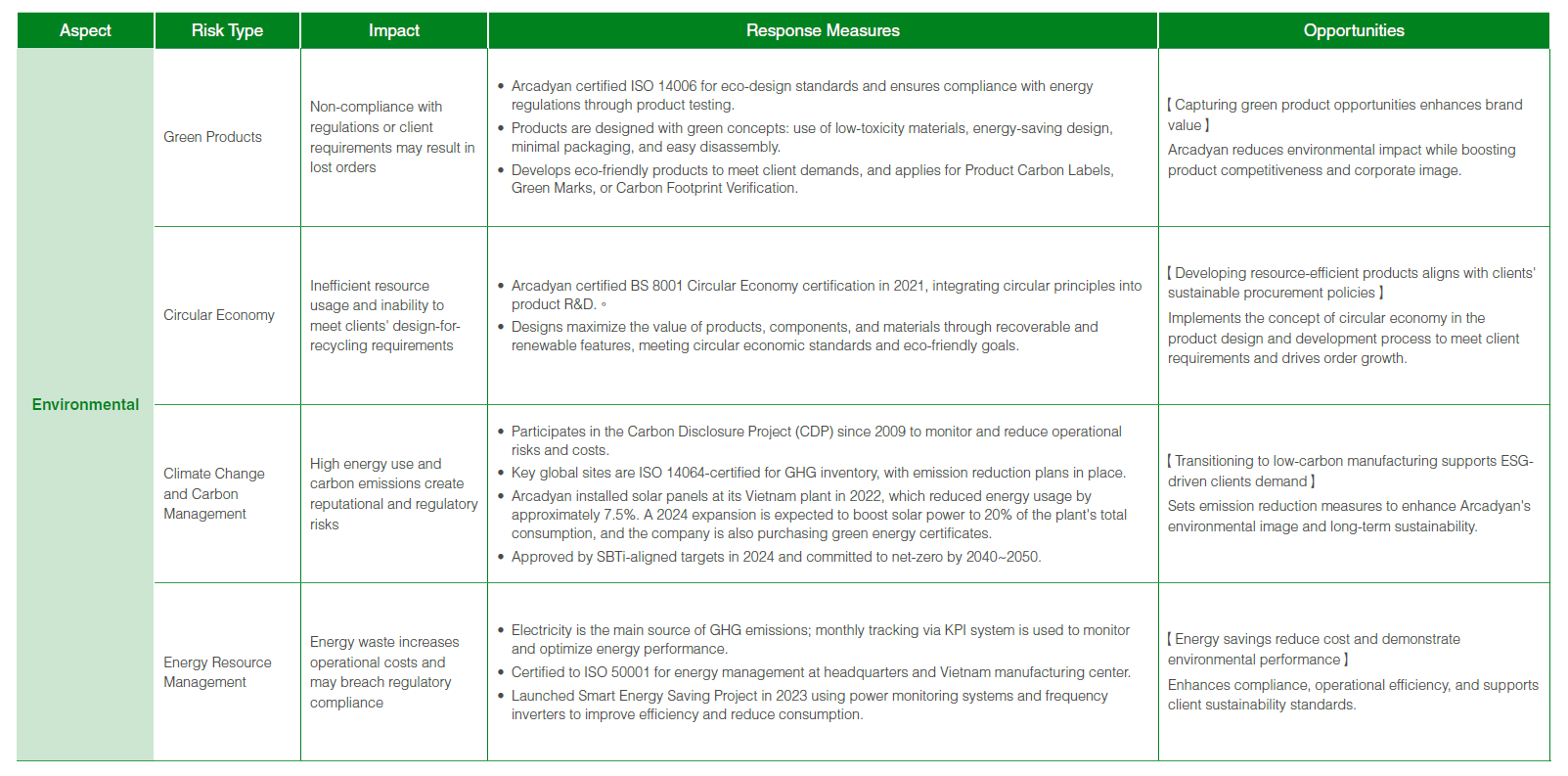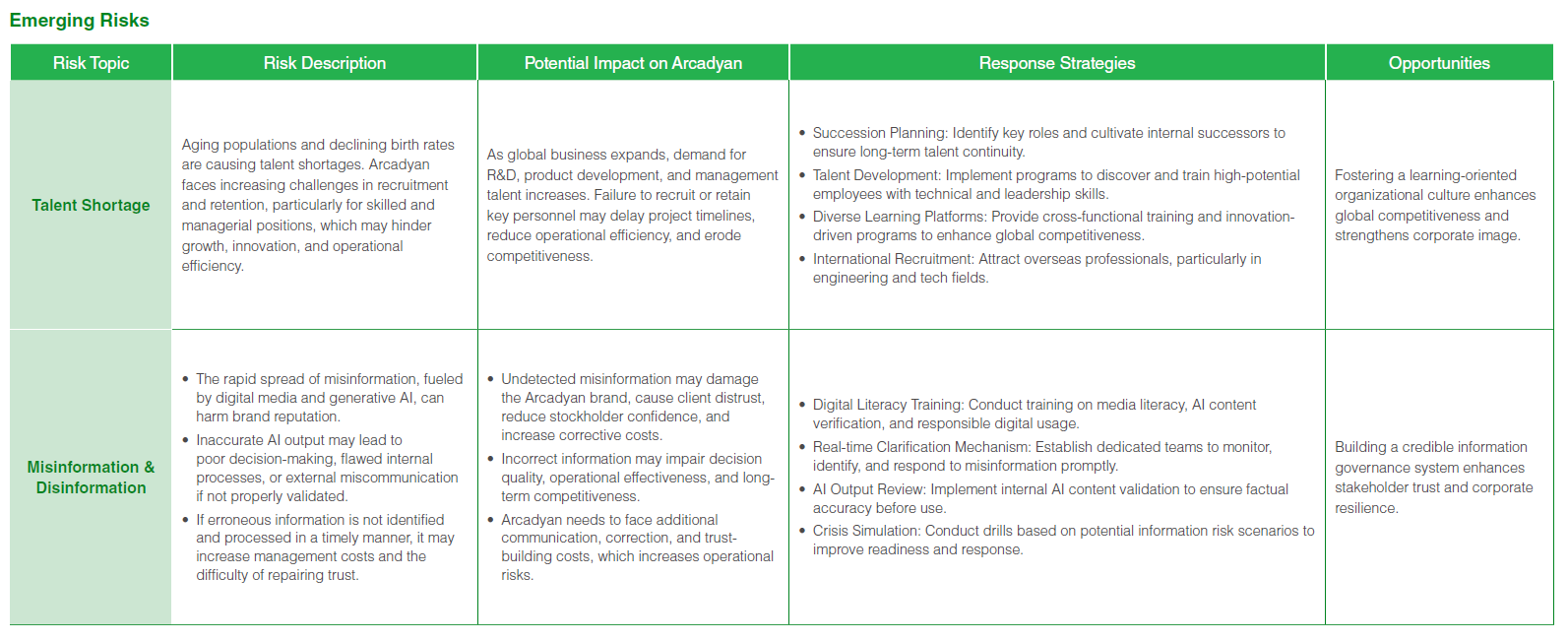To establish a comprehensive risk management structure, Arcadyan Board Directors approved Risk Management Policy and Procedure on November 10, 2022. The Policy and Procedure is to create a risk-award culture, assist the management to make informed business decisions and stabilize business operations toward corporate sustainability.
Based on company size, industry type, business characteristics, operation activities, and taking core values of corporate sustainability into consideration, Arcadyan has identified risk factors including strategic, operational, financial, information, compliance, integrity and other new emerging risks (e.g. climate change or infectious disease.) The nature and characteristics of identified risk events are studied, and the probability of the occurrence and impact level are analyzed, and further response measures are planned referring to the risk assessment conducted.
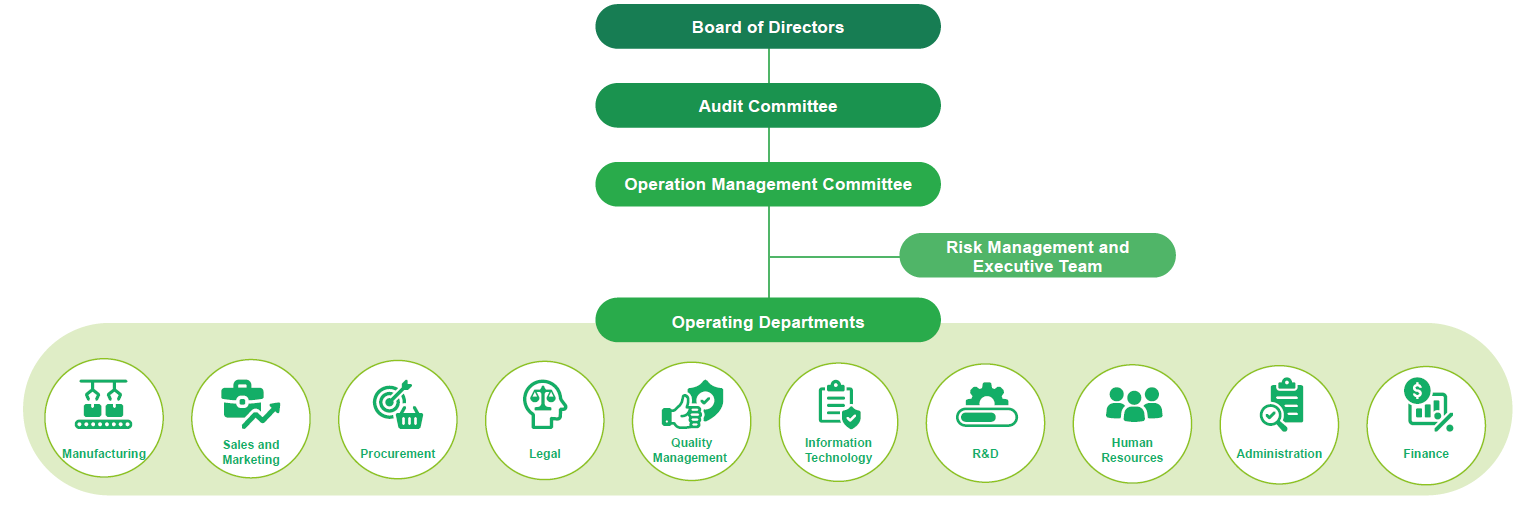
Arcadyan ISO 22301 Business Continuity Management Policy
- Effectively manage any unforeseen events that could potentially disrupt company operations.
- Ensure that critical products and services are restored to clients within the agreed-upon timeframe in the event of an operational disruption.
- Minimize potential impacts of any operational disruptions on Arcadyan and its reputation.
Arcadyan established "Operational Risk Management Procedure" that encompasses five key elements: Risk Identification, Risk Analysis, Risk Assessment, Risk Response, and Monitoring & Review. These serve as the core framework of Arcadyan's risk management system. Through this procedure, Arcadyan systematically identifies and assesses potential operational risks, encompassing environmental, economic, corporate governance, and social dimensions, across its global operational sites and subsidiaries.
Through a systematic risk identification and assessment mechanism, Arcadyan conducts a comprehensive review of potential risks associated with its operations. In 2024, a total of twentyseven risk items were identified, covering economic, environmental, and social aspects. Following risk analysis and classification, Arcadyan prioritized those risks with the highest potential impact, narrowing its focus to nine economic risks, four environmental risks, and 3 social risks. For each of these critical risks, Arcadyan developed management strategies and response measures, while also assessing their potential for transformation into opportunities, strengthening its resilience and adaptability in an increasingly dynamic and uncertain global environment.
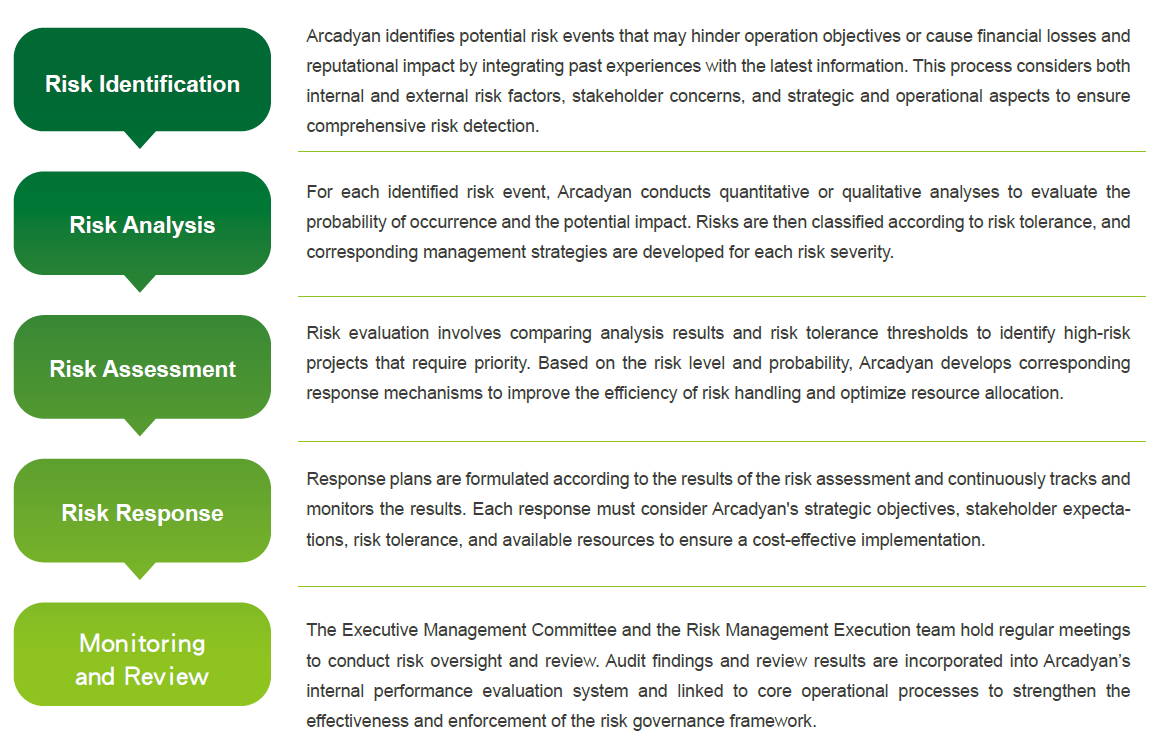
Arcadyan Headquarters and Vietnam Manufacturing Centers obtain ISO 22301 Business Continuity Management System certification annually, establishing analysis and risk assessment processes. Based on the PPTISSFT framework (People, Premises, Technology, Information, Stakeholders, Suppliers, Finance, and Transportation) for critical activities, we assess risk frequency and probability, setting recovery priorities, Incident Management Plans (IMP), and Business Continuity Plans (BCP) to effectively manage any unexpected events that could disrupt Arcadyan's operations. Risk management and response strategies based on sustainability material topics in 2024 are as follows:
